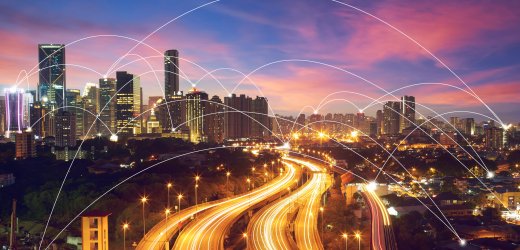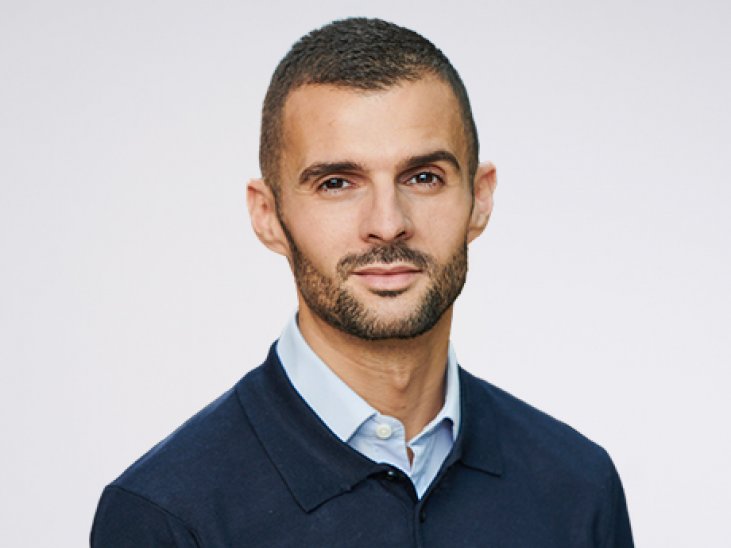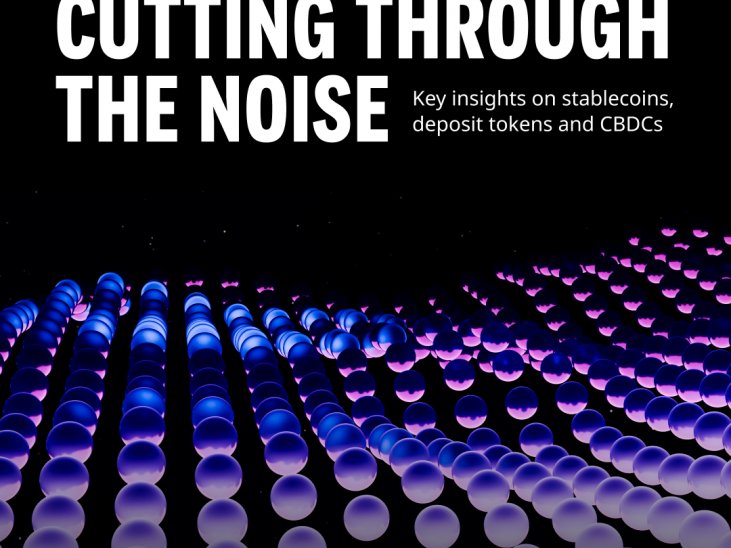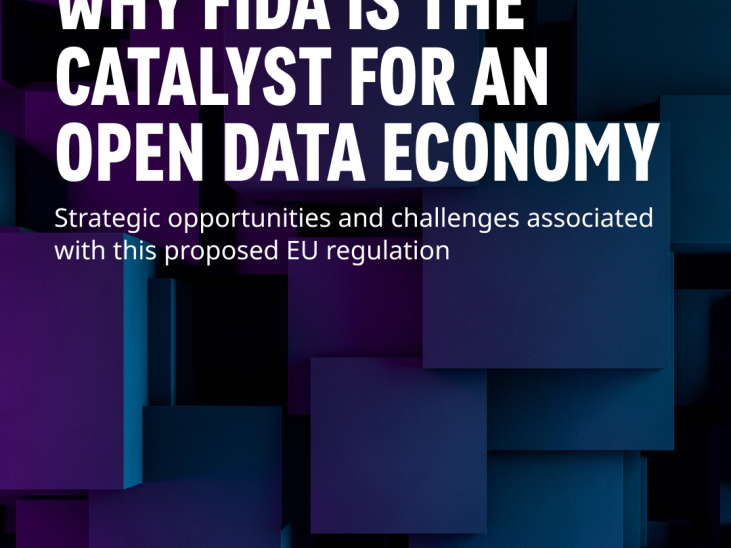5 Questions on Digital Sustainability to… Ron Frazer, VolkerWessels
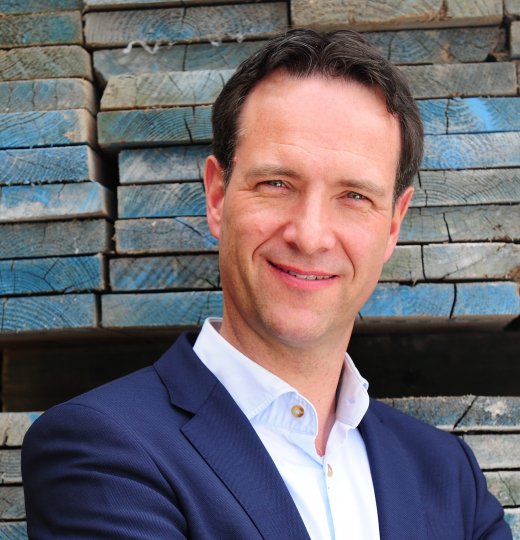
As Managing Director of Materials and Logistics at leading international construction company VolkerWessels, Ron Frazer is ultimately responsible for the right materials and equipment being in the right place at the right time on thousands of project sites simultaneously. Here, he discusses the challenges facing the construction sector, and how digital sustainability contributes to both the company’s own mission and the smarter use of data within the industry as a whole for the benefit of customers, end users and residents.
“A standardised, scalable, trust-based framework will help to make the flow of data just as efficient as the flow of physical materials in the construction sector.”
What does digital sustainability mean to you, and why is it a relevant topic for VolkerWessels?
The topic of sustainability is very important to our company. For many years, our mission has been “Building a better quality of life” for residents and users based on a sustainable, innovative and future-oriented approach. This is not always easy because the construction industry faces a combination of challenges. The tight housing market and the ongoing rise in demand for infrastructure mean that building activity must increase, which is putting companies like ours under greater pressure to be productive and efficient. Meanwhile, ever-tighter legislation means that we must work increasingly sustainably. For example, not only must our industry be ‘net zero’ by 2030, but building sites must be emission-free by 2028. To comply with this, we have already started phasing out diesel-powered generators and other equipment such as cranes in favour of more sustainable alternatives running on electricity or hydrogen, for example. Besides this, zero-emission zones are set to be introduced in 40 key Dutch towns and cities in 2025. This directly affects us, because 70% of our construction sites are in urban areas nowadays, and we expect this figure to rise to 80% in the near future.
On top of all this, megatrends such as climate change, labour shortages, the energy transition and the growing importance of health and welfare are all placing demands on our ability to adapt. In order to manage all these challenges, we need digital tools and solutions: firstly to tell us where we currently stand, then to help us to decide on which rational steps to take in order to reach the targets, and subsequently to monitor – and if necessary to steer – our progress. So I see ‘digital sustainability’ as a blanket term covering the digital tools and solutions that are enabling us to make the sustainability transition efficiently.
What is the current state of awareness of digital sustainability in your sector?
We work for a very broad spectrum of customers, ranging from infrastructure projects for the Dutch government, rail companies, telecoms firms and energy companies, to construction projects for housing associations and property investors. Many of our projects result from tender procedures, and we’ve noticed that sustainability is becoming increasingly important among our customers. It’s definitely no longer the case that the lowest bid automatically wins the tender. Nowadays, the best plan is determined based on many more factors besides the price, such as low-emission or zero-emission construction processes and materials, smart logistics, minimum waste, and minimum impact on local residents and the environment.
The use of digital technologies such as BIM, point clouds and 3D models is becoming increasingly in the construction sector. By visualising all the required materials for a project beforehand, these models give customers clarity and certainty about the final project costs, but they are also beneficial from a sustainability perspective. After all, they help to improve efficiency in the materials planning process and therefore minimise waste. Needless to say, we can’t just make hollow promises that we will perform on sustainability-related aspects; we also need to be able to produce validated third-party measurements and monitoring to show that we’ve delivered on our promises, so digital tools are crucial in this respect too.
How far along are you in your digital sustainability journey?
Thanks to winning so many tenders with a strong focus on sustainability, we have been able to steadily invest in improving our construction material fleet. 76% of our equipment is already emission-free, and we are now focusing on making the rest of our assets more sustainable.
Our digital transformation actually started around a decade ago, when we were implementing a new ERP system. We realised that it was a great opportunity to digitise the materials-ordering process for our contractors too. Each contractor is responsible for ordering the necessary materials for their own projects. They’d always done this from our printed catalogue – which of course was outdated before it even hit people’s desks. Not only that, but the high costs of human error in the ordering and fulfilment process were generating a lot of waste, which was putting pressure on our already tight margins. We decided that digitalisation could help us to achieve the efficiency boost we needed, so we developed a digital portal – in effect an online materials book – that was directly integrated with the ERP. Now, dashboards enable contractors to create orders that automatically generate picking lists, consignment notes and so on as they move through the entire fulfilment and transport process, right up to confirmation of delivery. The portal also provides insight into the number of logistics movements, waiting time, costs and so on. This digital flow helps to ensure that we get things right first time, minimising waste and improving efficiency, and also provides the basis for continuous improvement.
Another example of how digital tools are helping us to work more efficiently and therefore sustainably are the ‘smart’ cameras that we’ve installed at project sites. These cameras monitor and measure what is going on on-site, such as the number of materials logistics movements, the hours worked and therefore the productivity of both our equipment and our workers. By analysing the data to improve the productivity and efficiency, we can reduce the amount of time spent at each site and therefore reduce the local impact in terms of noise and disruption – thus contributing to a better lifestyle for people.
What are the specific challenges in the construction industry in the context of digital sustainability?
Construction projects involve hugely complex supply chains, with lots of different suppliers, workers, machines and building materials. Everything has to be coordinated, often to tight deadlines, so that it all arrives in the right place at the right time. To give you an idea of the scale of the challenge, within VolkerWessels we have 130 local operating companies across four countries, with over 6,000 contractors working on around 25,000 projects a year, and around 2,000 operational project sites at any one time in the Netherlands alone. Another issue is that building sites are notoriously wasteful. A study by TNO in 2016 revealed that the average project resulted in lost, damaged or unused materials totalling around €50,000.
However, due to the supply chain complexity, we are currently limited to what we can influence outside of VolkerWessels. Many more gains could be achieved by connecting all the relevant parties in the supply chain together for each project to create a smooth flow of data revolving around the central construction plan. That’s why I was happy to become involved in the steering group for the DSGO scheme – with a specific focus on its adoption and implementation by the industry – around a year ago.
What is the DSGO scheme, and how will it contribute to a more digitally sustainable future?
DSGO stands for Digitaal Stelsel Gebouwde Omgeving, which is a digital scheme or ‘data space’ for the built environment. Since 2021, more than 40 leading organisations from across the architecture, engineering and construction (AEC) sector have been working together to develop this scheme as part of the Dutch government’s acceleration programme known as digiGO for the ongoing digital transformation in the sector. DSGO is also part of the Dutch roadmap for clean and emission-free construction, in which the sector is working together to achieve various targets, including to reduce carbon and nitrogen emissions by eliminating unnecessary logistics-related transport movements.
In this context, as VolkerWessels, we have been setting up ‘construction materials logistics hubs’ on the outskirts of towns and cities. Instead of all our suppliers delivering their goods to each construction site, they deliver to our hubs and we consolidate the necessary goods into project-specific ‘parcels’ of required materials. We then take care of the last-mile transport – sustainably, of course – to the relevant site on a just-in-time basis. This shift in thinking, looking at the bigger picture of all projects in a particular geographical area rather than individual projects, has enabled us to take further steps to improve our sustainability – such as by reusing leftover materials for future projects rather than simply throwing them away, or by reaching agreements with suppliers on the takeback of unused materials.
Keeping all of this running smoothly requires the exchange of a huge amount of digital information throughout the supply chain. Ideally, the flow of data should be just as efficient as the flow of physical materials, but the technological maturity of individual supply chain partners has been a limiting factor to data exchange in the past – not everyone is at the same stage with their IT, and not everyone speaks the same digital language. On top of that, the competitive nature of the construction sector means that most companies have traditionally preferred to keep their cards close to their chest, and many have had strong reservations about sharing data. But there are now signs of change. More and more companies understand that data sharing is necessary and transparency is crucial for optimally serving customers, end users and residents.
The DSGO* scheme provides a digital framework for this that is standardised, scalable and embeds trust. Additionally, in order to digitally transform the entire supply chain, it was an important founding principle that it should be for everyone – not just ‘the happy few’. This scheme removes the financial, legal and IT barriers that previously discouraged smaller or less technologically mature companies from getting involved in data sharing. Therefore, it will support further digitalisation – and consequently more collaboration, productivity, efficiency and also innovation – within the Dutch construction sector. Over the past few months we’ve already achieved several successes, including on the e-CMR, and we’re looking forward to achieving many more as we move forward step by step, together.
*INNOPAY’s Mariane ter Veen also mentioned the DSGO scheme in a recent article on Digital Sustainability (“Don’t wait until digital sustainability is actionable, because it already is. You can – and should – start today!”). Click here to read the interview.
